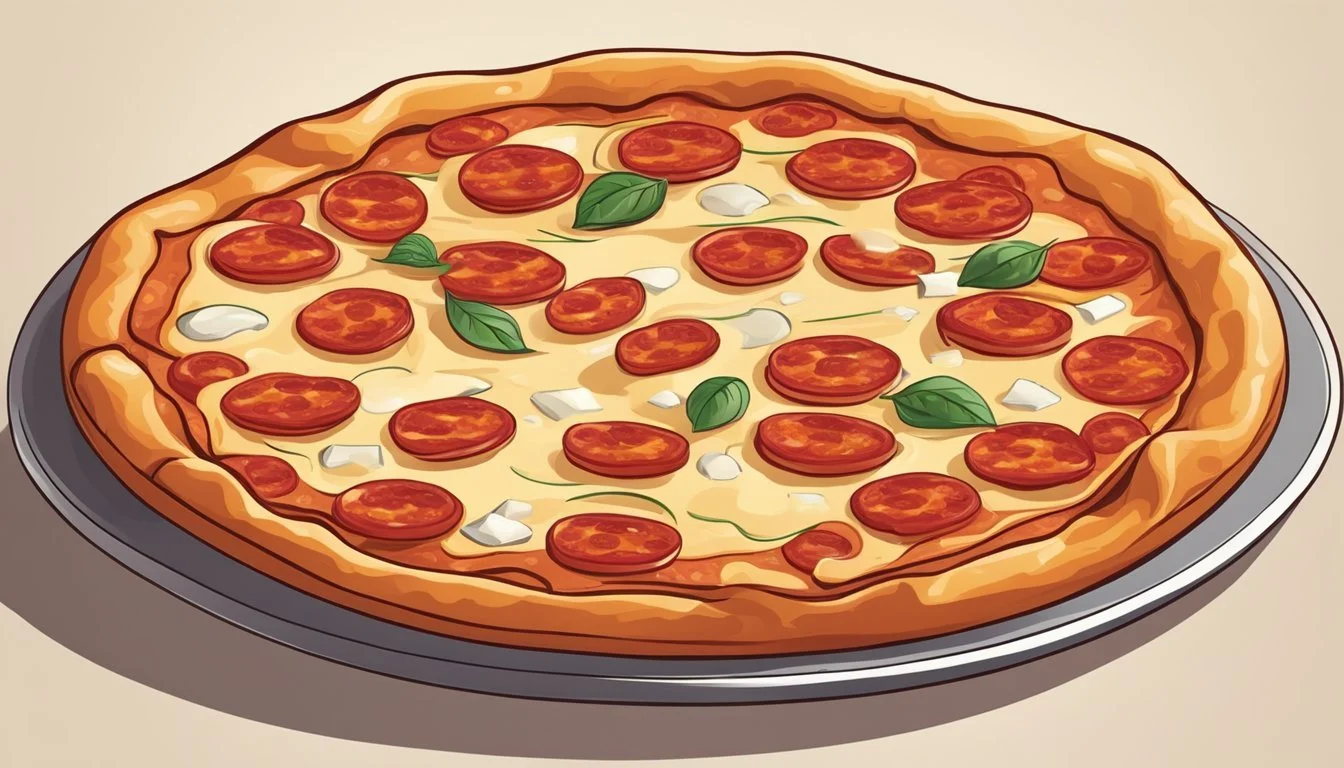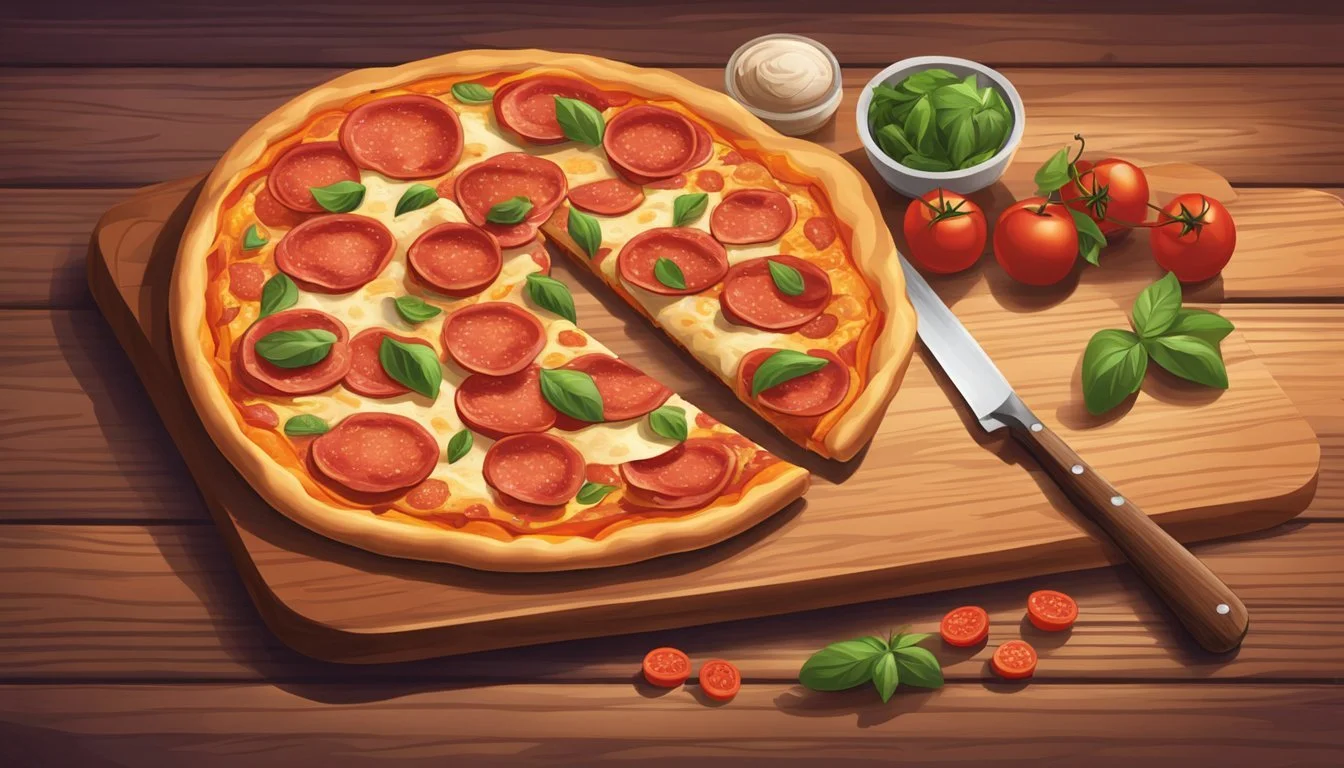How do you eat a pepperoni pizza?
Tips for Enjoying Every Slice
Eating a pepperoni pizza is an experience cherished by many, combining the flavors of zesty tomato sauce, rich cheese, and the spicy kick of pepperoni. It's a classic dish enjoyed across the globe where the robust taste of pepperoni makes it a memorable meal. When consuming a pepperoni pizza, individuals often look for a harmonious balance between the crunchy, charred edges of the crust, the gooey cheese, and the savory pepperoni slices.
The process of eating a pepperoni pizza typically begins with choosing whether to eat it by hand or with utensils, which can depend on the pizza's thickness and the diner's preference for casual or formal eating. A thinner, crispier crust lends itself to being picked up by hand, allowing the eater to enjoy the tactile sensation of the warm dough and toppings. On the other hand, a thicker, more laden pizza might require the aid of a fork and knife to manage the generous amounts of cheese and pepperoni without creating a mess.
As for the pepperoni itself, its placement on the pizza matters; when laid atop the cheese, it often crisps up under high heat, adding a slightly smoky flavor and contrasting texture to each bite. The cured meat's bold taste enhances the overall flavor profile of the pizza, making the act of eating not just a means to satiate hunger but an indulgence in the varied tastes and textures that come with each slice.
Selecting Ingredients
For a truly delicious pepperoni pizza, the selection of ingredients is of paramount importance. Using high-quality components for the cheese, pepperoni, and dough can transform a simple meal into an exceptional culinary experience.
Choosing the Right Cheese
The cheese used on a pepperoni pizza must be able to melt well and complement the bold flavors of the pepperoni. Mozzarella is a traditional choice due to its superb melting qualities and mild taste. For depth of flavor, chefs might blend mozzarella with Parmesan cheese, which adds a slightly nutty and salty profile.
Mozzarella: Melty and mild
Parmesan: Nutty and salty
Preferred Pepperoni Types
When choosing pepperoni, one should look for a cured meat that balances both spiciness and tanginess. The quality of pepperoni is essential; it should be vibrant red and can come in varying degrees of heat. Sliced pepperoni that crisps at the edges provides a satisfying texture and releases flavorful oil that imbues the pizza with its characteristic zest.
Sliced Pepperoni: Crisp edges, spicy note
Appropriate Dough Choices
The dough acts as the foundation of the pizza and varies in texture from crispy to chewy. All-purpose flour is versatile and accessible, making it a standard for homemade pizza dough. However, for a more authentic texture, bread flour is preferred due to its higher protein content, resulting in a chewier crust. A touch of olive oil can be added to enrich the dough, and a proper amount of salt is crucial for flavor development.
All-Purpose Flour: Versatile, widely available
Bread Flour: Higher protein, chewier crust
Olive Oil: Enriches dough
Salt: Enhances flavor
Preparation Methods
The preparation of a pepperoni pizza involves three critical steps: creating the pizza dough, assembling the toppings, and setting up the oven correctly for baking. Each step requires attention to detail to ensure a delicious outcome.
Mixing and Kneading Dough
One begins the pizza dough with a blend of flour, active dry yeast, and warm water. The precise measurements must follow a specific recipe. For proper gluten development, which determines the texture of the dough, they need to mix the ingredients initially in a stand mixer and then knead the dough by hand or with a dough hook attachment for 5-7 minutes until it is smooth and elastic.
Assembling Toppings
Once the dough is ready, the assembler lightly coats the surface with olive oil before spreading a layer of pizza sauce. On top of the sauce, one evenly distributes shredded mozzarella, followed by a generous amount of pepperoni slices. Optional toppings include mushrooms, diced bell peppers, and onion. Topping proportions and combinations should be adjusted according to personal preference while ensuring not to overload the dough, which could lead to uneven cooking.
Oven Set-Up and Preheating
The baking process dictates the final quality of the pizza. One must preheat the oven with a pizza stone or a heavy-duty baking sheet inside. The target temperature is commonly set between 475°F (246°C) to 500°F (260°C), ensuring the oven reaches the right temperature before baking the pizza for an evenly cooked crust with the perfect crispness. It's essential to heat the stone or sheet for at least 30 minutes to an hour to guarantee it's uniformly hot.
Cooking Techniques
When making pepperoni pizza, precise cooking techniques contribute significantly to the final flavor and texture. Mastery of crust baking, temperature control, and utilizing alternative cooking appliances can elevate a typical pepperoni pizza into a remarkable culinary experience.
Baking the Perfect Crust
To achieve a crispy crust, one must start with a preheated oven, ideally set at a high temperature. The oven should be preheated to a temperature commonly between 475°F to 500°F (246°C to 260°C). A cast iron skillet or a pizza stone can be used to mimic the results of a commercial pizza oven by distributing heat evenly. For an extra crispy bottom, one can preheat the skillet in the oven before placing the dough on it.
Optimal Cooking Time and Temperature
The cooking time generally ranges from 12 to 15 minutes depending on the desired crispiness of the crust and the toppings used. A good indication of the pizza being done is when the cheese is bubbling and the edges of the crust have turned a golden brown. It is important to monitor the pizza because cooking times may vary depending on the thickness of the dough and the actual temperature within the oven.
Alternative Cooking Methods
Aside from the oven, pizza can be cooked using alternative methods such as a grill, air fryer, or on the stovetop.
Grill: One can grill pizza to imbue it with a uniquely smoky flavor. The process involves preheating the grill to a medium-high setting and grilling the pizza for 2-3 minutes to achieve grill marks along with a crispy crust.
Air Fryer: For a quicker option, an air fryer can be utilized with a cooking time of 5 to 8 minutes at a similar temperature as an oven, though this method is typically suitable for small or personal-sized pizzas.
Stovetop: Utilizing a stovetop with a cast iron skillet can also yield a crispy bottom crust. One should cook the pizza on medium heat until the bottom is crispy and then briefly broil it in the oven if needed to melt the cheese on top.
Each method has its nuances, and experimenting with different techniques and cooking appliances can lead to discovering the perfect approach for one's own tastes.
Serving Suggestions
When serving pepperoni pizza, the experience can be greatly enhanced with the right slicing technique and thoughtful side dish pairings. Presenting pizza well and choosing appropriate accompaniments can turn a simple meal into a delightful feast.
Proper Ways to Slice Pizza
One should always ensure that their pepperoni pizza is sliced in a manner that maintains the integrity of the toppings and makes for easy handling. For a standard-sized pizza, one might consider the classic eight slices, using a pizza cutter or a sharp knife to create even, triangular pieces. For larger pizzas, slicing into ten or even twelve pieces may be more practical to manage portion size. For a fun twist, squares can be an option, particularly appealing when sharing as it easily caters to different appetites.
Accompaniments and Side Dishes
Salad: A Caesar salad, garnished with garlic butter breadcrumbs instead of croutons, offers a crunchy texture that complements the pizza's savory flavors. Fresh basil leaves can bring a burst of color and a fresh flavor profile to the salad.
Vegetables: Roasted vegetables such as broccoli prepared cacio e pepe style, infusing them with a cheesy, peppery flavor.
Appetizers: Before delving into the main course, one might serve a variety of appetizers such as olives, stuffed mushrooms, or a cheese board that can include thick slices of pepperoni with an assortment of cheeses like Parmesan, Gouda, or Cheddar.
Leftovers: If there are any leftovers, they can be repurposed creatively. Leftover pepperoni slices can be added to sandwiches, salads, or even incorporated into a best pepperoni pizza recipe for the next day, ensuring no waste and a flavorful experience with each meal.
Customizing Your Pepperoni Pizza
Crafting a homemade pepperoni pizza opens up possibilities for personalization. Whether one is looking to accommodate dietary restrictions or simply desires to inject some creativity into their dish, the following subsections offer guidance on how to tailor the pizza.
Creative Topping Variations
One can extend the traditional flavor of a pepperoni pizza with a range of inventive toppings. Adding proteins such as chicken, bacon, or sausage can enhance the savory depth, while fresh vegetables like green bell pepper and black olives contribute a crisp contrast and bursts of color. Using ingredients sparingly allows each element to shine without overwhelming the pepperoni.
Diet-Specific Modifications
For those with dietary considerations, a pepperoni pizza can still be a feast to enjoy. For a gluten-free crust, alternative flours such as almond or coconut can be used. Dairy-free options can include cheeses made from almond, soy, or other plant-based milks. Individuals seeking vegetarian options might replace meat toppings with mock pepperoni or additional vegetables, ensuring the pizza aligns with their dietary preferences.
Storing Leftover Pepperoni Pizza
When storing leftover pepperoni pizza, one should focus on maintaining the quality and safety of the slices. Proper refrigeration methods and reheating techniques are key to enjoying leftover pizza that tastes as close to fresh as possible.
Best Practices for Refrigeration
For the safekeeping of leftover pepperoni pizza, refrigeration within two hours of cooking is vital to prevent bacterial growth. The recommended method is to:
Place slices in an airtight container, ensuring they do not touch to avoid them sticking together.
Alternatively, stack the pizza slices with wax paper, freezer paper, or parchment paper in between each slice and then wrap tightly in plastic wrap or aluminum foil.
The optimal location for storing this container is on the top shelf of the refrigerator, where the temperature is most consistent. Stored this way, leftover pepperoni pizza will remain fresh for 3-4 days.
Reheating Without Losing Quality
When reheating pepperoni pizza, the goal is to restore the pizza's original texture and flavor. Here are the preferred methods:
Oven: Heat the pizza at 400 degrees for five to eight minutes. This method helps to crisp the crust and melt the cheese evenly.
Toaster Oven: Use a similar approach to the oven, which can yield results that are just as satisfying but for individual slices.
Skillet: For a slice that retains its crispy base, warm it in a skillet over medium heat for a minute, then cover and heat for another few minutes until the cheese is bubly.
One should avoid using the microwave, as it tends to make the crust soggy. No matter the method chosen, one must ensure the pizza reaches an internal temperature of 165°F to guarantee food safety during consumption.





